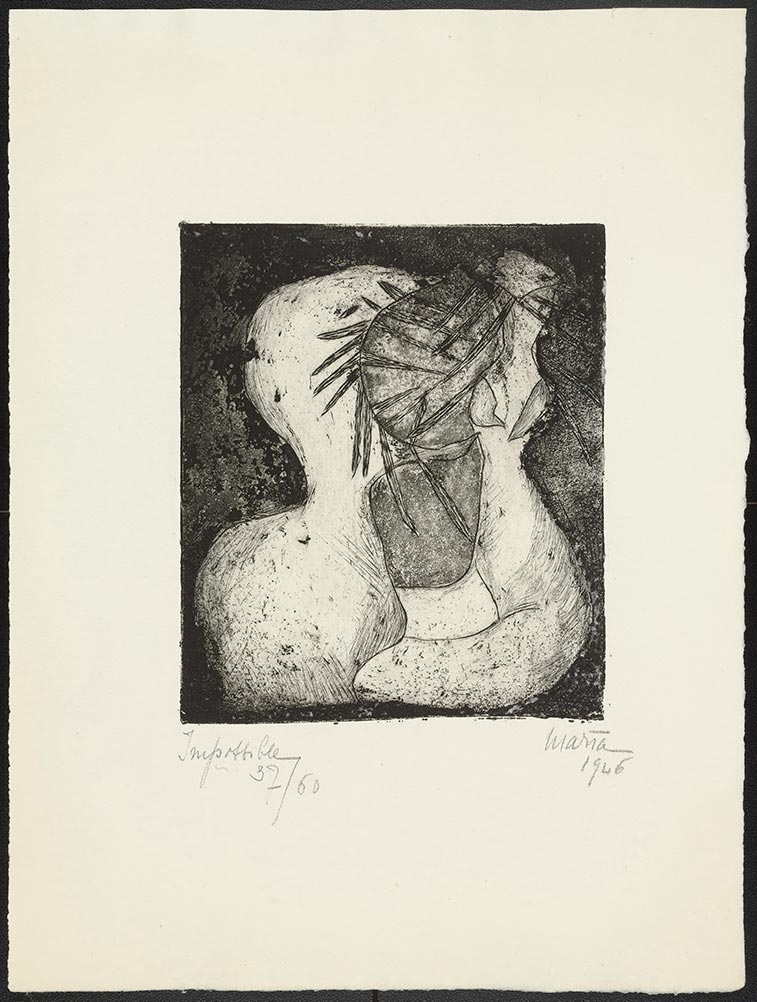57. Maria Martins
| Life Dates | 1894-1973 |
| Place of Birth | Campanha, Brazil |
| Place of Death | Rio de Janeiro, Brazil |
| Birth Name | Maria de Lourdes Alves |
Maria Martins, or Maria as she preferred to be known professionally, was born in Campanha, Brazil.1 At twenty-one she married Octávio Tarquínio de Souza, a Brazilian historian and intellectual, but the couple separated in 1925. Soon after Maria married Carlos Martins Pereira e Souza, a career diplomat. During the first fifteen years of their marriage, the couple traveled extensively for his postings to Ecuador, France, the Netherlands, Japan, and Belgium, where Maria began her artistic studies at the age of forty with the sculptor Oscar Jespers. Maria worked prodigiously once she relocated to Washington, D.C., where Carlos served as Brazilian ambassador to the United States. She had her first solo show of sculptures at the Corcoran Gallery of Art in October 1941, which received positive reviews. That winter, Maria rented an apartment in New York, where she continued to produce innovative sculptures. Her work initially dealt with themes of religion and folklore from her native Brazil, but she shifted to surrealism after meeting André Breton, who admired her exhibition at Valentine Gallery in 1942. Through contact with the greater surrealist circle living in New York, she likely learned of Atelier 17.2 Although Maria’s student work from Atelier 17 is unknown, she independently produced a portfolio in conjunction with her third and final show with Valentine Gallery in 1946, which demonstrates mastery of intaglio printmaking. Alongside Maria’s four-page, handwritten poem, the portfolio included engraved and etched translations of the sculptures from this 1946 show, some of which became her most critically acclaimed works. After another quick move to Paris in 1948, Maria continued to make sculpture upon the couple’s permanent return to Brazil in 1949.
Selected Bibliography
Breuning, Margaret. “Maria Martins Sculpts Primordial Myths.” Art Digest 18 (May 15, 1944): 20.
J. K. R. “Sculpture by Maria.” Art Digest 22 (December 15, 1947): 25.
J. W. L. “Maria.” Art News 41 (June 1942): 42.
“Maria.” Art News 46 (December 1947): 43.
“Maria’s Sculptures.” Art News 43 (May 15, 1944): 20–21.
Naumann, Francis M. Maria: The Surrealist Sculpture of Maria Martins. New York: André Emmerich Gallery, 1998.
Ramos, Graça. Maria Martins: Escultora Dos Trópicos. Rio de Janeiro: Artviva, 2009.
Recent Works by American Sculptors. New York: Buchholz Gallery, 1945.
“Some Living Artists of Brazil.” Art News 40 (January 15, 1942): 15–31.
Taylor, Michael R., and P. Andrew Lins. Marcel Duchamp: Étant Donnés. Philadelphia, PA and New Haven: Philadelphia Museum of Art, published in association with Yale University Press, 2009.
Notes
- Francis M. Naumann, Maria: The Surrealist Sculpture of Maria Martins (New York: André Emmerich Gallery, 1998). ↩
- It was during this time that Maria began an affair with Marcel Duchamp and modeled for his last major work, Étant donnés (1946–66). Duchamp’s letters to Maria were published in Michael R. Taylor and P. Andrew Lins, Marcel Duchamp: Étant Donnés (Philadelphia: PMA, 2009). ↩

